We have a 2-week field project off of Kona starting November 2nd. Although our primary goals for the project involve working with false killer whales, both pelagic and insular, we’ll be working with all species of odontocetes we encounter, using a variety of methods (photo-ID, biopsy sampling, drone photogrammetry, and satellite tagging) to learn more about these populations. This project is funded both by a grant from the Pacific Islands Fisheries Science Center and a contract from the State of Hawai‘i, supported by a Species Recovery Grant from NOAA.
The primary research crew for the project are Colin Cornforth, Kimberly Wood, Jordan Lerma, and Robin Baird. We also take out a number of volunteers each trip, including students from local universities, educators, individuals who work on the water, and others involved in marine research or conservation efforts
End of project update
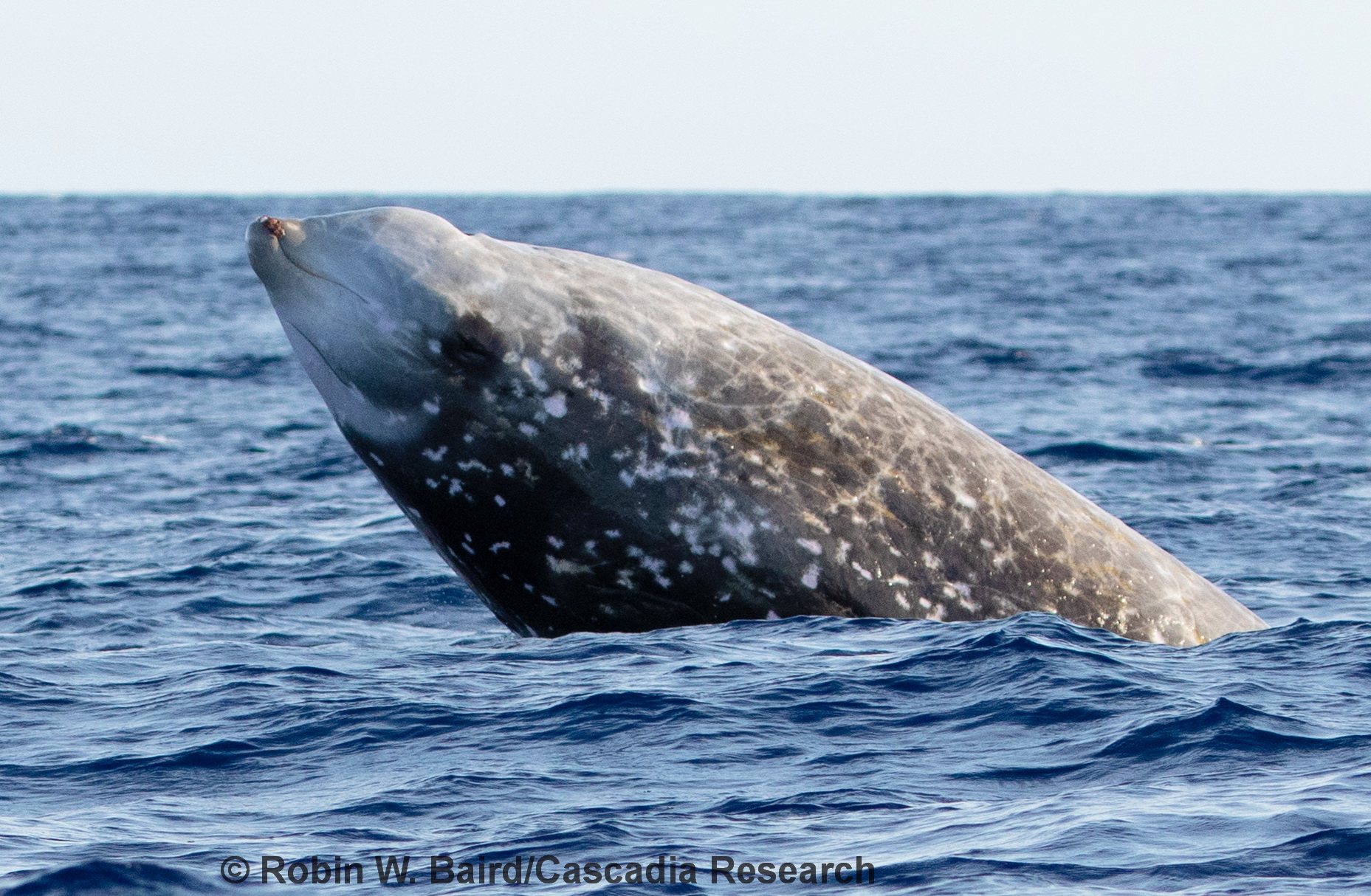
Overall it was a very successful project. We spent 13 days on the water and covered over 2,000 km of trackline, encountering 12 species of cetaceans. Surprisingly, Cuvier’s beaked whales (including the lone individual above) were the third-most frequently encountered species, with encounters on four different days! The individual above is an adult male, with the teeth visible at the tip of the lower jaw. This individual is doing a “terminal lunge” before it goes down on a long dive.
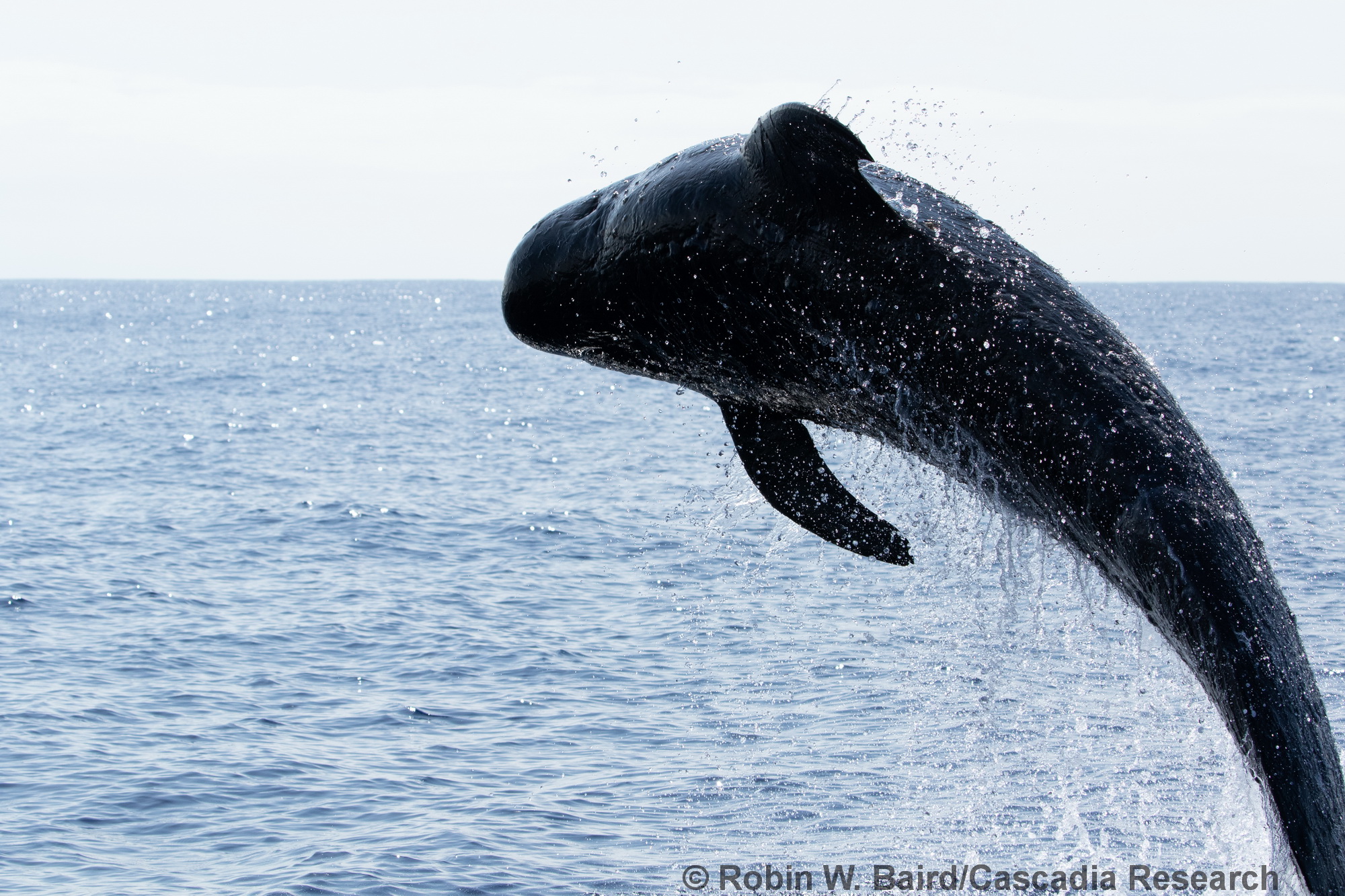
More than a third of all our sightings this trip were of short-finned pilot whales. This isn’t too surprising – normally pilot whales are the most frequently-encountered species in our work. We did see some unusual behaviors with pilot whales this trip, including this lone adult male breaching repeatedly, as well as the fish predation earlier in the trip.

Other than the lone spinner dolphin seen in the group of pantropical spotted dolphins offshore, the only spinners we saw this trip were resting at the mouth of Honokohau Harbor. This is not too surprising, given almost all our effort was offshore (see map below), while spinners primarily rest inshore during the day.

November 11th update

The last few days have been busy and productive. We’ve encountered several new species of cetaceans (now up to 10 species in 10 days on the water), and have encountered false killer whales on three different days. We’ve witnessed several predation events with false killer whales, including the individual above — the fish in the mouth is probably a Almaco Jack (known locally as a kahala), and we’ll confirm this with genetic analysis of a sample obtained after the whales had ripped up the fish.
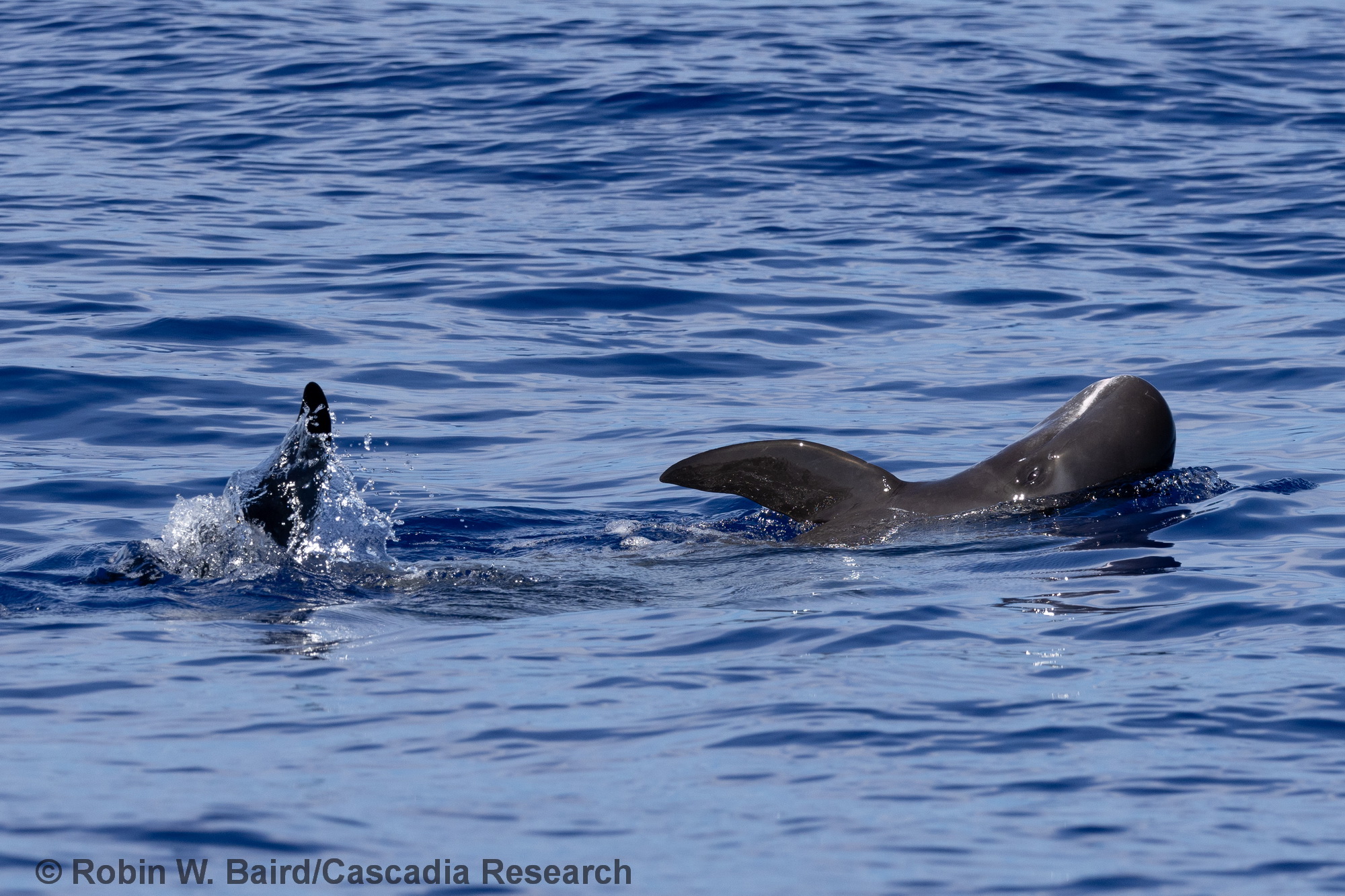
Today we also encountered a large group of pygmy killer whales, our first (and perhaps only) sighting for the trip. This was a large group, and we were able to get good ID photos of at least 15 different individuals, as well as drone-based imagery for measurements. There is a resident population of pygmy killer whales around the main Hawaiian Islands, and a quick look at the photos showed that at least some of the individuals present are from the resident, island-associated population.

Today we also encountered a large group of pantropical spotted dolphins, with a single spinner dolphin mixed in to the group (the second-closest individual in the photo above). Although small groups of spotted dolphins sometime associate with spinner dolphins in their resting bays, it is rare to see spinner dolphins offshore (whether associating with spotted dolphins or otherwise).
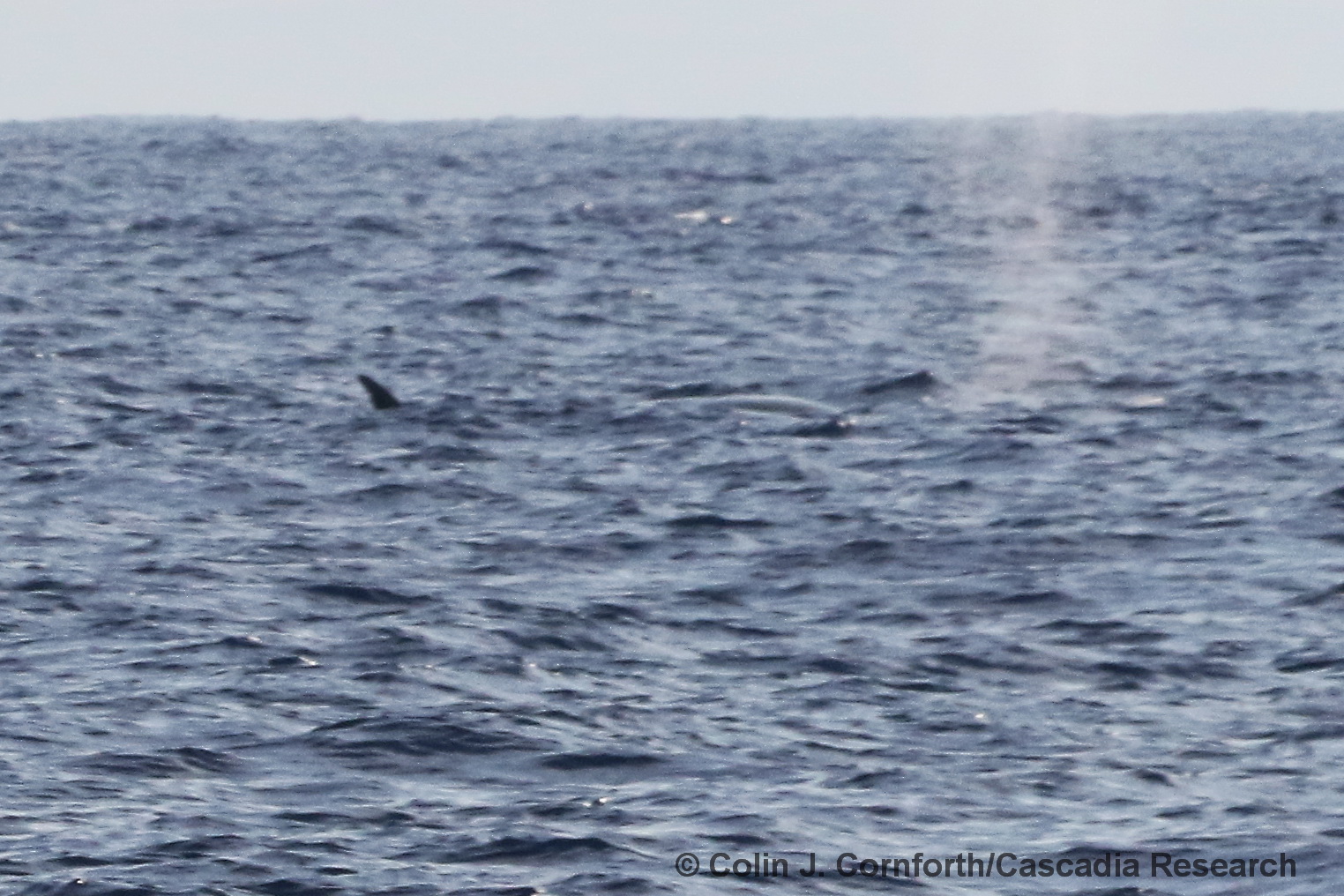
On November 9th we encountered a sei whale offshore of Kona! This is only our third sighting of a sei whale in our 22 years of working in Hawaiian waters, and our first off of Kona. While we weren’t able to get close (thus the zoomed in photo shown above), we were able to confirm the species based on another photo in this series that shows the downturned tip to the rostrum. If you want more information on sei whales in Hawaiian waters check out our sei whale page!

On November 8th we encountered three dwarf sperm whales, our first (but hopefully not last) sighting for the project! There is a resident population of dwarf sperm whales off Kona, but a comparison to our photo-ID catalog did not reveal any matches, suggesting these might be part of the open-ocean population.

The photo above shows a short-finned pilot whale with a fish in the mouth. Despite the fact that we’ve had over 800 sightings of pilot whales in our work, this is the first time we’ve ever seen one with a fish in the mouth! We posted this photo on Facebook and had mixed opinions on the species of fish, but the two most likely options are a Razorback Scabbardfish or a Ribbonfish! The best part of the encounter is seeing something completely new for a species we see extremely frequently.
November 7th update

Today was supposed to be the crew’s “day off”, but instead one of our tagged false killer whales decided to come by the west side and the crew went out to work with the group! As well as obtaining ID photos we were able to get one biopsy sample of the individual above — this individual was first documented in 2010, a member of Cluster 3 of the endangered main Hawaiian Islands population of false killer whales.

We also witnessed one predation event, with the individuals converging and all feeding on an ahi (yellowfin tuna), seen here in the mouth of one individual.
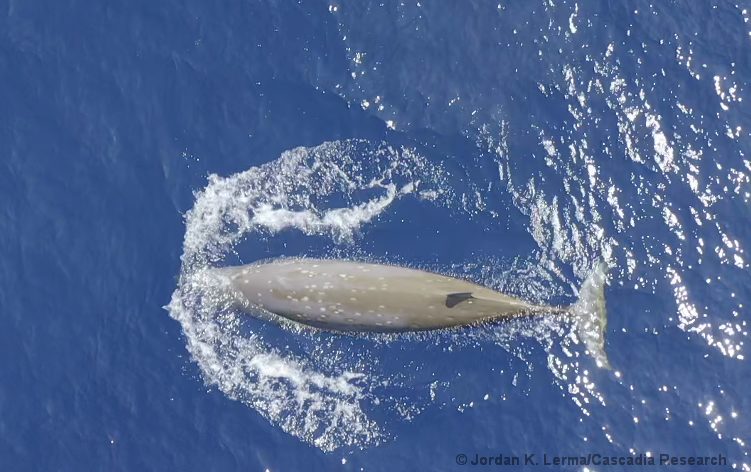
On November 6th we again encountered Cuvier’s beaked whales, and were able to get drone imagery of one individual. The brownish coloration visible above is a thin layer of diatoms on the skin, and the white oval scars are from cookie-cutter shark bites.
November 5th update

We’ve had several encounters with short-finned pilot whales this trip – overall they are the most frequently-encountered species of odontocete in our work, representing almost a quarter of all encounters. We have a large photo-ID catalog of this species in Hawaiian waters, with almost 3,000 individuals documented, including both resident (island-associated) and pelagic individuals. During today’s encounter we obtained ID photos of about 20 individuals to add to the catalog.
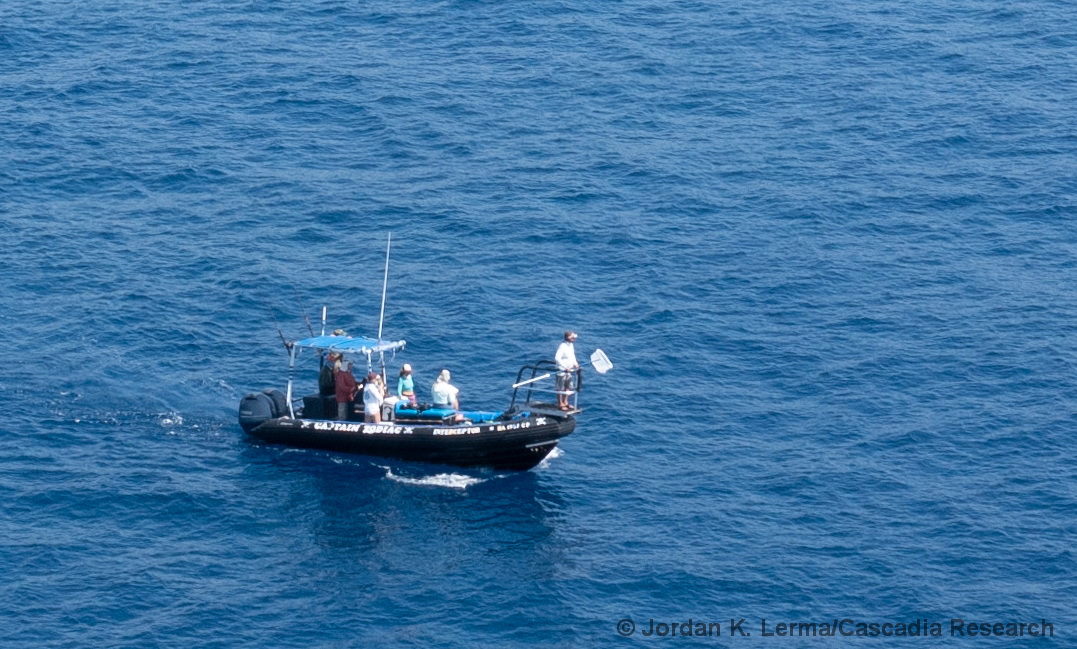
We also spent some time working on drone-assisted fecal sampling. You can do a lot with a poop sample from a whale — assess what it has been eating, determine the sex of the whale, and measure stress and reproductive hormones. We’ve been involved in systemically collecting fecal samples from killer whales in Washington State for many years, and these samples have been used for a number of studies (see links to some of them here). We’ve opportunistically collected fecal samples from several species of Hawaiian odontocetes, but have begun a project systematically collecting fecal samples in order to assess diet as well as stress and reproductive hormones. This involves following behind the whales, with someone (Colin Cornforth pictured here) in the bow pulpit with a net scanning for samples, while also using the drone to detect samples and direct the boat to them. Quite a successful first day, with three samples collected!
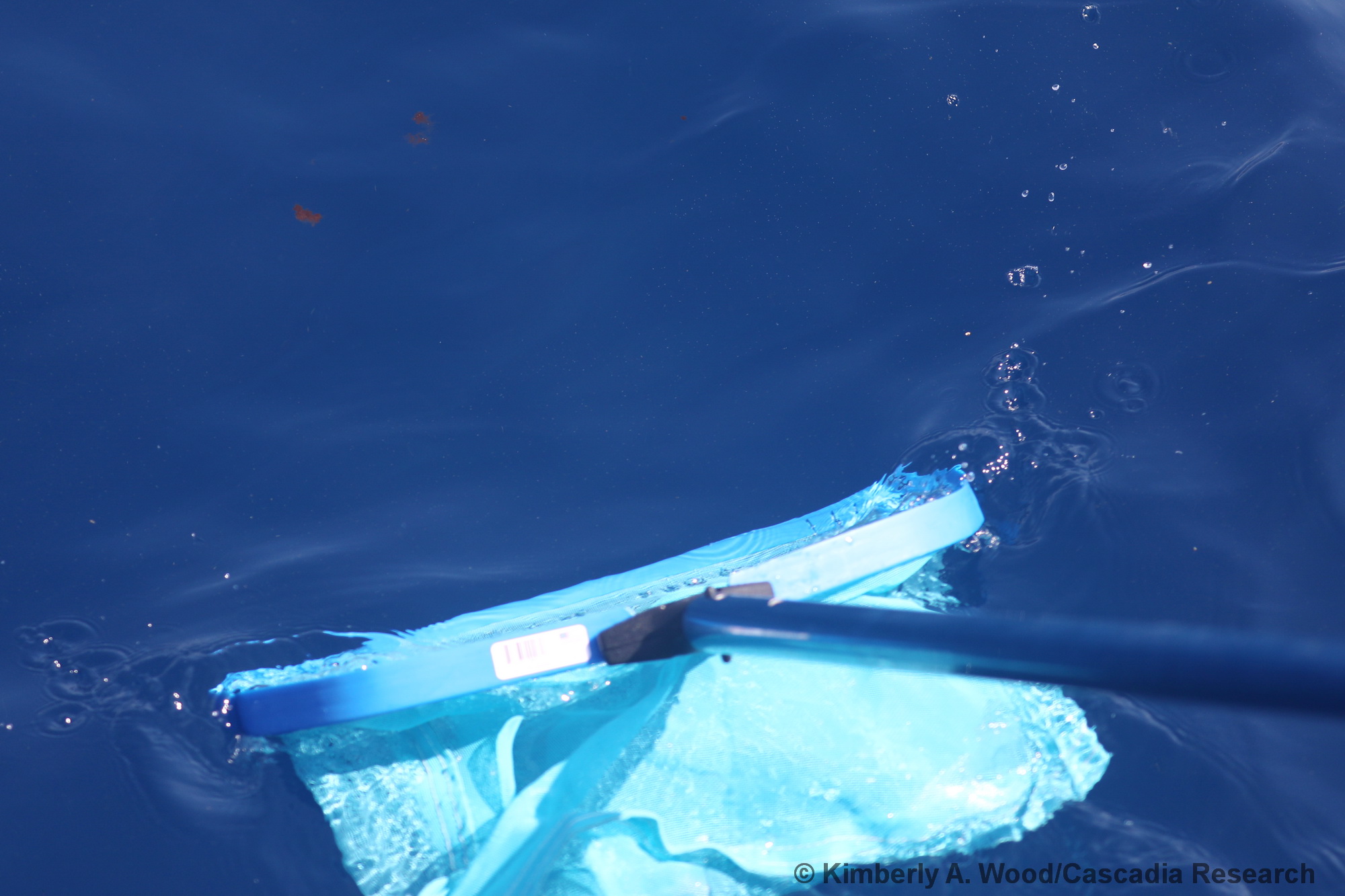
The photo above shows us scooping up a fecal sample from a short-finned pilot whale today.
November 4th update

In our first three days on the water we’ve covered over 500 km and encountered five species of odontocetes, and have been able to get far offshore (see map below). Our most interesting sighting from today was a lone Cuvier’s beaked whale (above). Based on our photo-identification work there is a small resident population of Cuvier’s beaked whales off the island, and we’ll be adding the photos of this individual to our catalog to assess it’s sighting history. The white oval scars visible on the side of this individual are from cookie-cutter shark bites, and these scars remain visible for up to 20 years. Check out our beaked whale web page for more information on this species.

When the weather is calm we try to get as far offshore as possible – yesterday we were able to make it all the way to Indianapolis Seamount (the most offshore track shown in the map above).

We also encountered two groups of pantropical spotted dolphins – we have a growing photo-identification catalog for this species and are continuing to collect photos as well as adding older photos to the catalog. Spotted dolphins acquire spots with age,and spotting patterns can also change shape over time, so they are less reliable than dorsal fin markings to identify individuals. The swirls of spots seen in the individual above are caused by cookie-cutter shark bites (see the individual below), with the spots along the edges of the bites being elongaged and “dragged” inwards as the bite wounds heal.

The spotted dolphin above has a partially-healed bite wound from a cookie-cutter shark — as it heals it will distort the surrounding spotting pattern.
November 2nd update
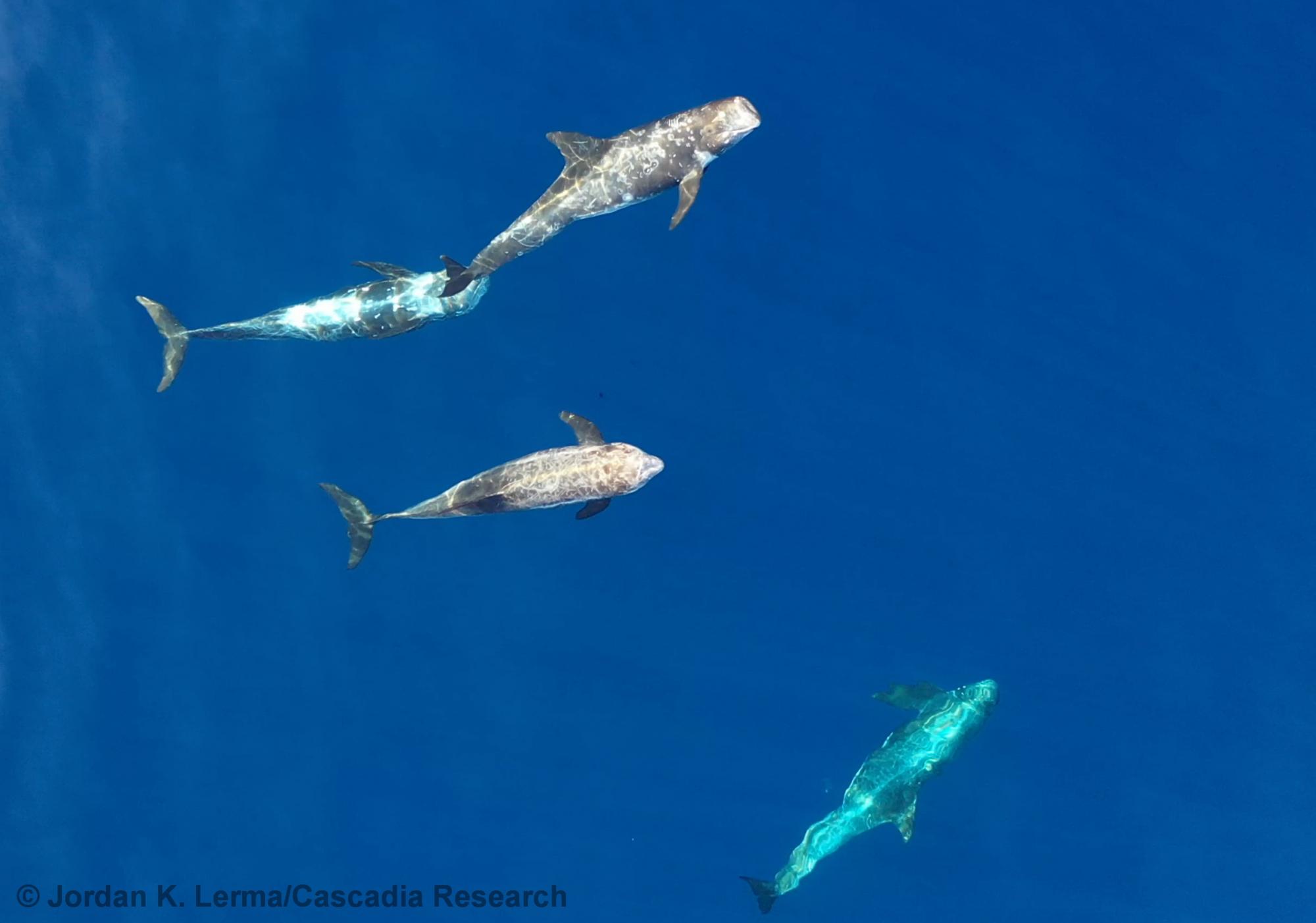
Today was our first day of the project and we were able to make it far offshore into depths of over 4,500 m, beyond the range of many of the island-associated populations. We were lucky to encounter a large group (~35 individuals) of Risso’s dolphins, only our 17th encounter with this species in Hawaiian waters in the 22 years of the project. In addition to drone footage to measure individuals, we were able to get ID photos of about half the individuals present.

We have a photo-identification catalog of just over 140 individual Risso’s dolphins from off Hawai’i Island, although we have no re-sightings of individuals, reflecting that these animals are likely part of a large open-ocean population, rather than an island-associated resident population.

Risso’s dolphins acquire and retain white scars throughout their lives,from interacting with other dolphins as well as from their primary prey, squid, progressively getting whiter with age. These scars, as well as the notches on the trailing edge of the dorsal fin, can be used to identify individuals. In the photo above you can also clearly see the vertical groove on the forehead, characteristic of this species. Check out our Risso’s dolphin web page for more information on this species.
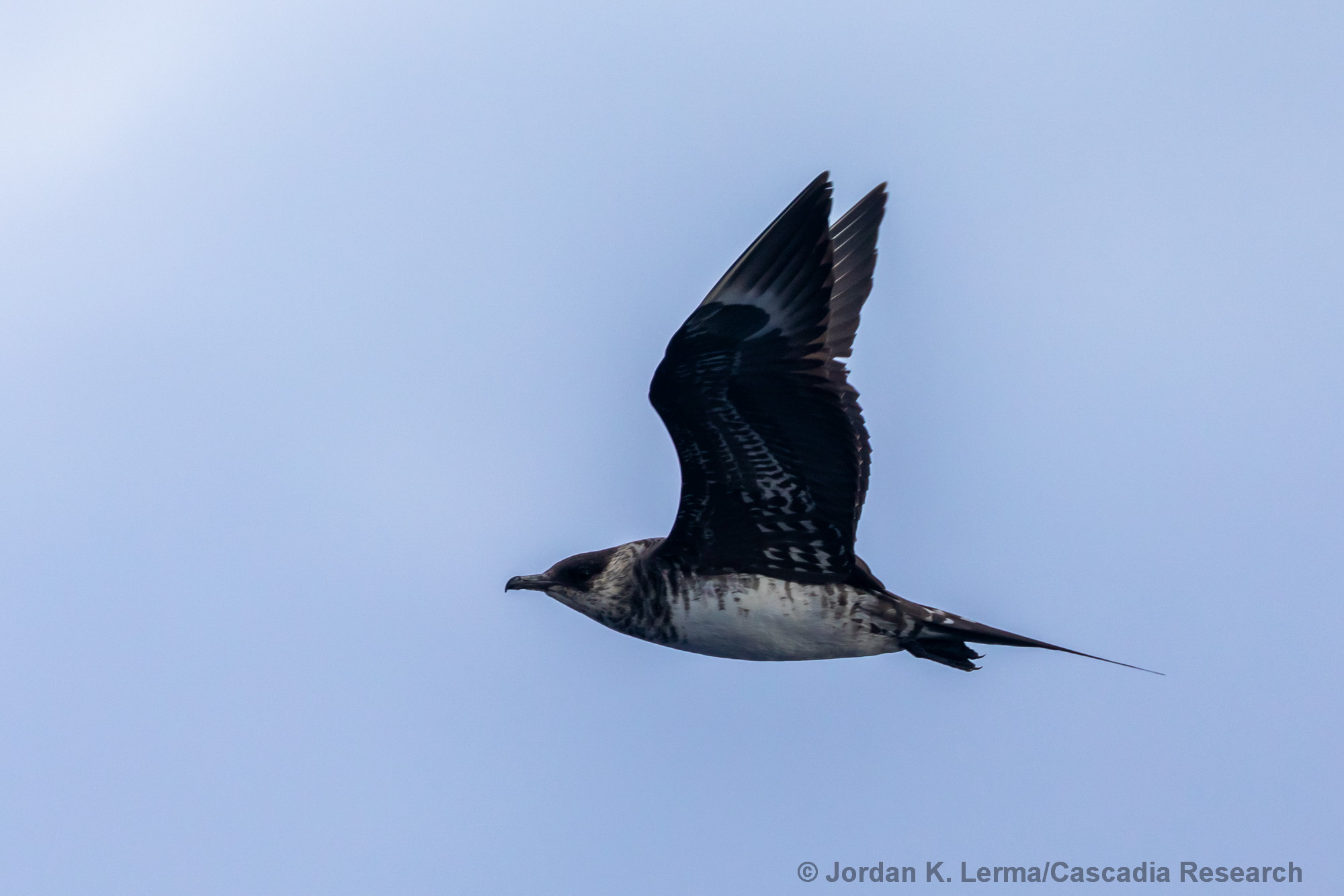
We also had sightings of a lot of great seabirds today, including the Parasitic Jaeger above. This is only the fourth-time we’ve photographed this species in Hawaiian waters.
The photo at the top of the page is of a pair of Blainville’s beaked whales, taken during our April/May 2021 Kona field project. The individual in the back is an adult male, with the highly arched jaw – in his case the tips of the teeth are covered with stalked barnacles (the brown seaweed-looking material on the top of the head). Male Blainville’s beaked whales fight a lot with other male Blainville’s, and end up with a lot of scar tissue on the head – quite visible on this individual.\
Photos taken under NMFS MMPA/ESA Research Permit No. 20605
Contact Robin Baird (rwbaird “at” cascadiaresearch “dot” org) for more information on this project.